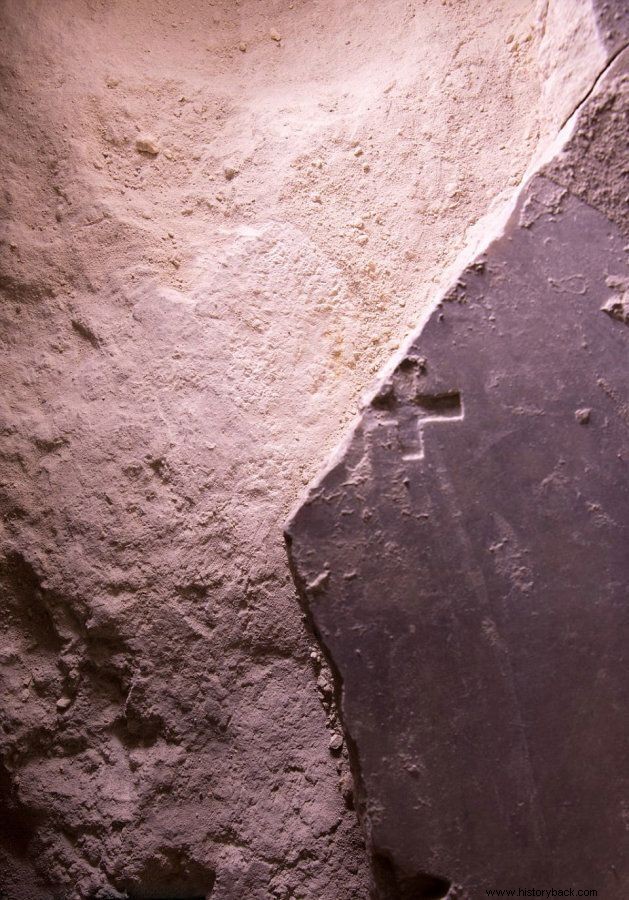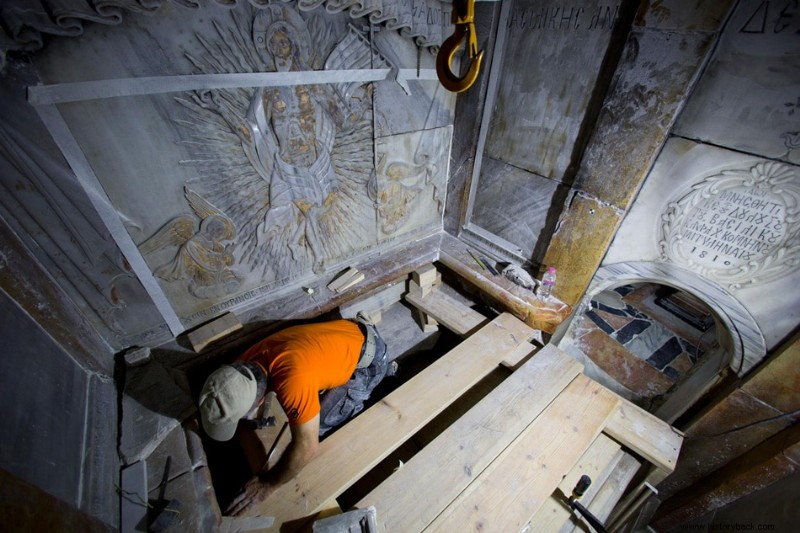Located in the Church of the Holy Sepulcher in the Old City of Jerusalem, the tomb consists of a long rock bank (the funerary bed), on which, according to tradition, the body of Jesus Christ was laid after the crucifixion:a typical burial of the wealthy Jews who lived in Jerusalem in the first century AD. C.
For many centuries, no human being has been able to visit the interior of the chamber of Jesus' tomb since church officials set it with layers of marble in 1555.

But on October 26, 2016, researchers from the National Technical University of Athens had 60 hours access to the tomb for a restoration project before it was sealed again, probably for centuries to come.

The National Geographic had exclusive access to the restoration project of the church.
"Now we have seen with our own eyes the current burial place of Jesus Christ," Father Isidoros Fakitsas, the superior of the Greek Orthodox Patriarchate, told the New York Times. “No one had ever seen him, or at least no one alive today. We have the history and the tradition. "
How old is Christ's tomb in Jerusalem?
Believers are likely to say 2,000 years, but in reality the complex built around the place where Jesus is believed to have been buried are much more recent, he just didn't know by how much. Now, however, a documentary from National Geographic entitled The Tomb of Jesus:Myths and Mysteries - and which incorporates the results of the excavations conducted by the Athens Polytechnic - reveals the mystery: the site was built 1700 years ago.

The mortar samples extracted inside the Basilica of the Holy Sepulcher of Jerusalem , in fact, they date the funerary complex to 345 AD, that is, at the time of the emperor Constantine , the first Christian leader of the Roman world, who believes him. The basilica has been the subject of violent attacks, fires and earthquakes over the centuries, so much so that in 1009 it was razed to the ground and then later rebuilt.
Precisely this troubled past has led scholars to hypothesize that the burial place of Jesus Christ - a limestone cave kept inside the aedicule - it may have already been discovered by a delegation sent by the Roman Empire about 1700 years ago and therefore enclosed in a protective building.
According to various historical sources, moreover, the place where the body of Christ was left to rest after death was discovered by the Romans and consecrated around 326 AD. At the time, a Romanesque temple from 200 years earlier stood on the same spot, which was razed to the ground.
Source:National Geographic
